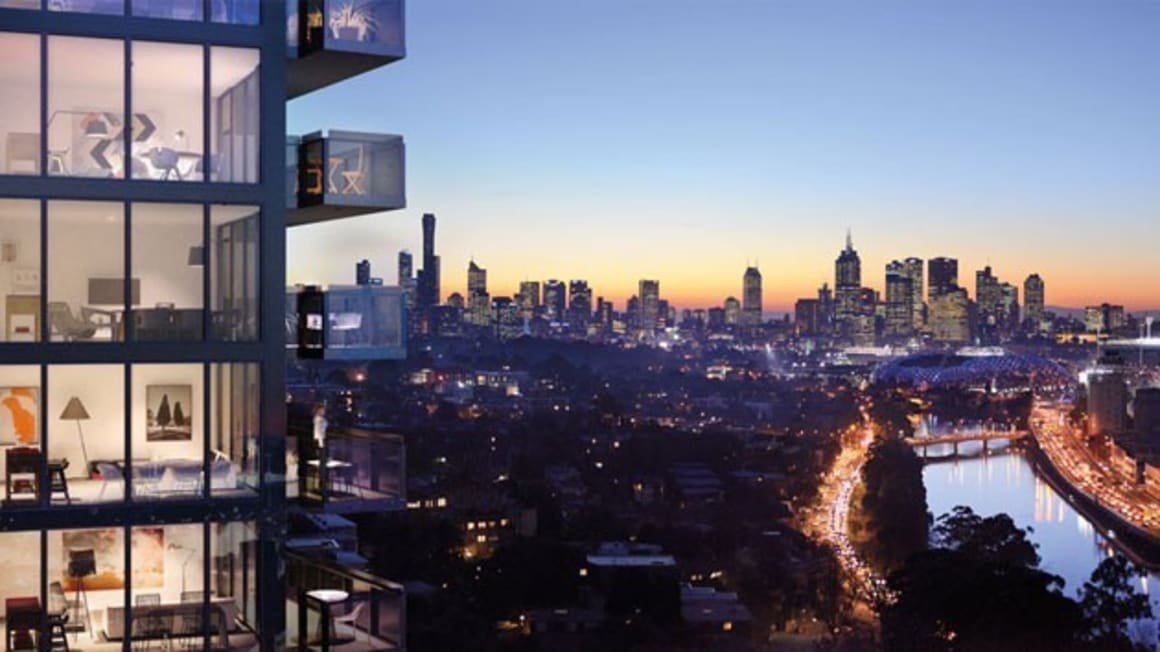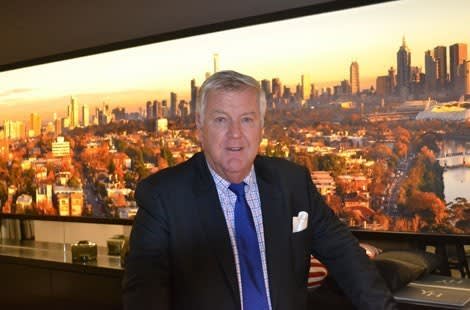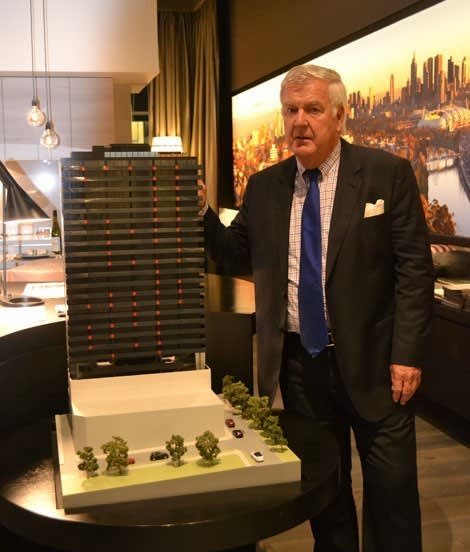South Yarra's Forrest Hill precinct: The vision behind the rejuvenating transformation

Rejuvenation of the Forrest Hill precinct in South Yarra is steaming along and further transforming the trendy suburb in Melbourne’s inner south-east.
The precinct - strategically important in the context of the Melbourne 2030 Plan - is designated as a key area within the surrounding City of Stonnington for higher density housing, mixed use and intensive built form.
And it’s sure making hay while the sun shines.
The former industrial area, bounded by Toorak Road, Chapel Street, Alexandra Avenue and Yarra Street, has found a new direction as a cosmopolitan mixed use zone with high-density apartment and retail buildings and a pedestrian laneway connecting Chapel Street to Yarra Street and the station.
It seems everything is happening! Cutting edge high rise apartment buildings by some of Melbourne’s leading developers, and an influx of hip retail shops, restaurants and bars, has enlivened the precinct and attracted residents and shoppers en masse.
It’s the way of the future: combine residential and retail hubs within walking distance of public transport.
Assessing the precinct’s development over the past few years, strategic planners Charter Keck Cramer and consultants Urbis found that 30 properties were either built, being built, or at varying stages of development with a total of 3,000 new apartments expected to be ready over the next decade, driving the population to 5,000 by 2020. Employment in the precinct is expected to reach 6,000 by that time.
The master plan for the precinct’s street level development includes the widening of footpaths and new paving materials, vibrant colours and patterns, landscaping treatments, the development of east/west pedestrian links, pedestrian priority, under grounding of power lines and installation of public art.
Emanating from the expected growth, retail spending capacity is expected to skyrocket to $43.1 million per annum, making Forrest Hill a major economic generator to businesses within the precinct and to the wider South Yarra catchment.
But things didn’t happen by chance. A lot of thought has gone into the transformation.
The impetus for many of South Yarra’s award-winning developments came from local icon Michael Yates (pictured below), a developer for 50 years and a South Yarra resident since he was 21. He had a vision for the area and the means to put it into effect. It’s certainly paying dividends.

Yates’ role in the regeneration of Forrest Hill came about after he approached the council with his vision for the area after the release of the Melbourne 2030 plan a decade ago. As a ‘preferred activity zone’ the area was designated a highly connective and master planned precinct with high standards of liveability.
More recently, the Plan Melbourne metro strategy has reinforced its credentials as being ideal for concentrated urban growth. In concert with this, the Yates group has put together 43 individual properties resulting in the development of five 25-storey residential towers and a 16-storey office building.
Yates believes Forrest Hill is one of the most successful examples of urban renewal in Australia. He has overseen more than $700 million in local development projects over the past 15 years, including the trendy Yarra Lane precinct and apartment projects at 50 Claremont Street, 7 Yarra Street and 9 Yarra Street.
And his focus is lifestyle. For example, Claremont, at 21 levels and 166 apartments, has extensive communal facilities including a library/lounge/TV room, summer deck, lap pool and gym. The latter pair, with a gross realisation of $175 million, and encompassing hip arcade Yarra Lane, were awarded the 2009 Urban Renewal Award as well as the Australian Property Institute Property Development Award for introducing the popular Melbourne lane-way culture to the suburb.
These are just a few of a string of awards that define Yates’ role in top end property development.
His latest foray drew attention to the little known concept of ‘air rights’, where the airspace above a building can be acquired by, say, the developer of a neighbouring building, ensuring the views are not built out by development of the original site.
Before setting out to develop 18 Yarra Street into a state-of-the-art, 95-apartment showpiece, Yates was able to buy into, and then acquire the air rights above, the adjoining low-rise No. 19, and transfer them by way of separate title to the owners of No. 18. The strategy aims to ensure his building’s north-facing views over Melbourne High School, the Yarra River and city skyline cannot be built out.
{yoogallery src=[images/stories/2013/12/12/south]}
It’s not hard to guess how this improved the appeal among potential buyers into the $90 million Yarra House development (pictured above). It is 70% sold – mainly to owner-occupiers from Stonnington, Armadale and Kew. Some have joined two apartments together to form a single, larger envelope in the 25-level building which has only five apartments per floor.
The one, two and three bedroom dwellings range in internal size from 44 square metres to 97 square metres, with prices starting from $459,000 and rising to $1.75 million. Some three-bedroom apartments in the popular north-east corner will be over 140 square metres.
Buyers reportedly appreciate the quality of the fit out, convenience to shops and transport and – of course – those views.

Photo: Michael Yates with a model of Yarra House
On reflection, Yates said he most enjoyed securing the actual site of his new projects - that’s the ‘determinant factor’.
"You’ve got to buy the right land at the right price," he said. "Then you’ve got to develop the plans, go through the urban design process, select the best interior designs, arrange the financing and then market the project successfully – that’s the end product.
"When you do a design everything is intricately linked so we have think tanks with consultants who are up to date with the latest trends and hope to come out with developments that are better than our competitors."
Two of Yates’ favourite projects are the 1993 redevelopment of the former Georges department store in Collins Street, Melbourne, into luxury boutique apartments, and the award-winning One Wallace Avenue development in Toorak. The $60 million project, based on London’s chic Halkin Hotel, received the Master Builders’ Excellence in Construction Award 2003 and the UDIA’s Excellence in High Density Award 2004.
He’s also thrilled with the success of his towers in the Forrest Hill precinct and their gestation period is making life even more satisfying. "I haven’t given any thought to retiring: I still love coming to the office and sometimes we work six or seven days a week."
Yates’ latest challenge is planning the development of two residential towers of 25 and 31 storeys on the former CR Kennedy site at 661 Chapel Street. They will overlook Melbourne High School and Chapel Street. Planning permits are expected within three months.
Despite the ‘big ticket’ projects he is aligned with, Yates said: "We run a small operation and that’s allowed us to offer a personalised service. We don’t get too carried away with ourselves and our repeat business is proof that our clients are happy with us."
What more could a businessman ask for?
Capitalising on the vibrancy and atmosphere of the eight hectare Forrest Hills development precinct, a host of big-name hospitality types has been drawn by Yates’ vision - especially into the area around hipster-hub Yarra Lane. Trendy venues are owned by celebrity chef George Calombaris, restaurater Davis Yu and cafe owner Nathan Toleman. South Yarra has always been well serviced with restaurants and cafes but their presence has taken fine dining to another level.
Melbourne’s credentials as ‘the world’s most liveable city’ haven’t come about by chance. Combined with natural advantages there’s been a lot of thought, energy and passion put in over many years by visionary types such as Michael Yates.
The scope and success of urban renewal in the burgeoning Forrest Hill precinct is his signature.